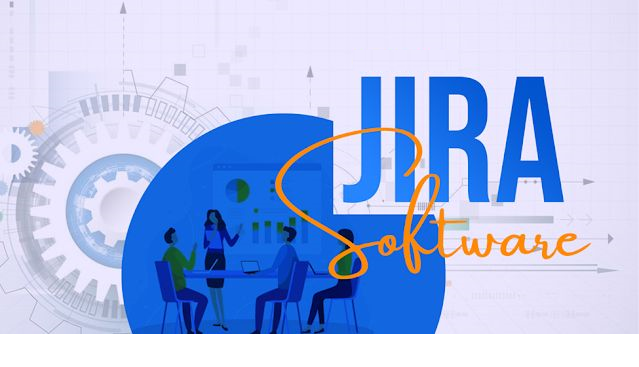In-Depth
Most of us know the importance of prioritization. Well .. most of us! 😉 In today’s fast-paced, hyper-connected world, the ability to effectively prioritize workload is no longer just a useful skill—it’s a critical one. Whether you’re a project manager overseeing multiple tasks, an entrepreneur juggling various responsibilities, or a professional striving to meet tight deadlines, the challenge remains the same: how do you decide what needs to be done first? The art of prioritization isn’t merely about arranging tasks in a sequence; it’s about making strategic decisions that align with broader goals, maximize productivity, and ensure the most critical work gets the attention it deserves.
Prioritization goes beyond simply managing time; it’s about managing energy, focus, and resources. With constant demands on attention, the lines between urgent and important tasks often blur, leading to a potential breakdown in productivity and an increase in stress. Professionals across industries grapple with this issue, seeking ways to not only manage their workload but to do so in a manner that enhances their effectiveness, both personally and within their organizations.
This article delves into the professional mindset around prioritization, exploring various methodologies, mental frameworks, and tools that can aid in this process. It also examines the psychological and emotional aspects of prioritization, recognizing that the ability to prioritize effectively is as much about mental clarity as it is about task management. By understanding and adopting best practices in workload prioritization, professionals can transform chaos into order, stress into accomplishment, and potential into performance.
The Importance of Prioritization in Professional Settings
Prioritization is not just a buzzword in the corporate lexicon; it’s a fundamental aspect of professional success. At its core, prioritization is about making choices—deciding where to allocate finite resources such as time, energy, and attention. Without a clear system for prioritization, even the most talented professionals can find themselves overwhelmed by competing demands, leading to burnout, missed deadlines, and subpar performance.
In professional settings, the stakes are often high. The ability to prioritize effectively can be the difference between the success and failure of a project, the growth or stagnation of a career, and the profitability or decline of a business. Organizations that foster a culture of effective prioritization are better positioned to adapt to changes, meet objectives, and sustain long-term success.
From a personal perspective, prioritization also plays a critical role in career development. Professionals who excel at prioritizing their workload are often seen as reliable, efficient, and capable leaders. They are better equipped to manage their responsibilities, make informed decisions, and achieve their goals. Moreover, the ability to prioritize effectively contributes to better work-life balance, reducing stress and enhancing overall well-being.
Common Challenges in Prioritization
While the importance of prioritization is widely recognized, the process itself is fraught with challenges. One of the most significant obstacles is the sheer volume of tasks that professionals are expected to manage. In an age where multitasking is often glorified, it’s easy to fall into the trap of trying to do everything at once. However, this approach can lead to fragmented focus, diminished productivity, and increased stress.
Another challenge is the difficulty in distinguishing between urgent and important tasks. Urgency often demands immediate attention, but not all urgent tasks are truly important. Conversely, important tasks that contribute to long-term goals may not always feel pressing, leading them to be postponed in favor of more immediate concerns. This can result in a reactive approach to work, where professionals are constantly firefighting rather than strategically managing their workload.
The pressure to please others can also hinder effective prioritization. Professionals may find themselves saying “yes” to requests from colleagues, clients, or supervisors, even when these tasks do not align with their most critical goals. This can lead to an overloaded schedule and a sense of losing control over one’s own work.

The Role of Mental Frameworks in Prioritization
Effective prioritization requires a mental framework—a set of guiding principles or strategies that help professionals make decisions about where to focus their time and energy. Several well-known frameworks can aid in this process, each offering a different perspective on how to manage tasks.
- The Eisenhower Matrix: This classic framework divides tasks into four quadrants based on urgency and importance:
- Quadrant 1: Urgent and Important (tasks that require immediate action)
- Quadrant 2: Not Urgent but Important (tasks that contribute to long-term goals)
- Quadrant 3: Urgent but Not Important (tasks that can be delegated or minimized)
- Quadrant 4: Not Urgent and Not Important (tasks that can be eliminated)
- The ABCDE Method: This method involves categorizing tasks by priority level:
- A: Must-do tasks with severe consequences if not completed
- B: Should-do tasks with mild consequences if not completed
- C: Nice-to-do tasks with no real consequences if not completed
- D: Tasks that can be delegated
- E: Tasks that can be eliminated
- The 80/20 Rule (Pareto Principle): This principle suggests that 80% of results come from 20% of efforts. In terms of prioritization, this means identifying and focusing on the tasks that will have the most significant impact on outcomes. By prioritizing these high-impact tasks, professionals can achieve greater efficiency and effectiveness.
Tools and Techniques for Effective Prioritization
In addition to mental frameworks, various tools and techniques can support the prioritization process. These tools can help professionals organize their tasks, track progress, and stay focused on their most critical objectives.
- Task Management Software: Tools like Trello, Asana, and Microsoft To-Do allow professionals to organize tasks, set deadlines, and collaborate with others. These platforms often include features like priority tags, due dates, and notifications, making it easier to manage and prioritize workload.
- Time Blocking: Time blocking involves scheduling specific blocks of time for different tasks or activities. By allocating dedicated time for high-priority tasks, professionals can ensure that these tasks receive the attention they deserve without being interrupted by less important work.
- The Pomodoro Technique: This time management method involves working in short, focused intervals (typically 25 minutes), followed by a short break. The Pomodoro Technique can help professionals maintain focus on priority tasks while also preventing burnout.
- Daily and Weekly Reviews: Regularly reviewing tasks and priorities can help professionals stay on track and make adjustments as needed. A daily review might involve setting goals for the day and identifying the most critical tasks, while a weekly review might focus on longer-term planning and prioritization.

The Psychological and Emotional Aspects of Prioritization
Prioritization is not just a logical process; it also has psychological and emotional dimensions. The ability to prioritize effectively requires mental clarity, emotional intelligence, and self-awareness. Understanding these aspects can enhance the prioritization process and lead to better outcomes.
- Mental Clarity: Clarity of thought is essential for effective prioritization. Professionals must be able to step back, assess the bigger picture, and make decisions based on what truly matters. Mental clutter—caused by stress, distractions, or overcommitment—can cloud judgment and lead to poor prioritization. Practices like mindfulness, meditation, and regular breaks can help clear the mind and improve focus.
- Emotional Intelligence: Prioritization often involves making tough decisions, such as saying “no” to certain tasks or requests. Emotional intelligence—the ability to recognize and manage one’s emotions and those of others—can play a critical role in these situations. Professionals with high emotional intelligence are better equipped to navigate the interpersonal dynamics of prioritization, such as managing expectations and communicating decisions effectively.
- Self-Awareness: Understanding one’s strengths, weaknesses, and work patterns is key to effective prioritization. Self-aware professionals are more likely to recognize when they are taking on too much, when they need help, and when they need to adjust their priorities. This self-awareness also extends to recognizing when they are most productive and scheduling high-priority tasks during those peak times.
- The Role of Stress in Prioritization: Stress is a common byproduct of heavy workloads and poor prioritization. When tasks pile up, the pressure to complete everything can become overwhelming, leading to stress-related issues such as burnout, anxiety, and decreased performance. Effective prioritization can mitigate stress by providing a clear roadmap for tackling tasks, reducing the feeling of being overwhelmed, and ensuring that critical work is completed on time.
Balancing Short-Term and Long-Term Priorities
One of the most challenging aspects of prioritization is balancing short-term and long-term priorities. Short-term tasks often feel more urgent and pressing, but focusing exclusively on them can lead to neglect of long-term goals. Conversely, an overemphasis on long-term priorities can result in missed deadlines or neglected responsibilities in the short term.
To strike the right balance, professionals need to adopt a dual focus, keeping both immediate and future objectives in mind. This requires regular reflection and adjustment, as well as the flexibility to shift priorities when necessary.
- Aligning Tasks with Goals: Aligning tasks with broader goals helps ensure that both immediate and long-term objectives are met. By focusing on tasks that support overall goals, professionals can make meaningful progress on both fronts.
- Setting Milestones: Breaking long-term goals into smaller milestones makes them more manageable and ensures they are integrated into daily tasks. Milestones provide a sense of progress and help balance long-term priorities with immediate responsibilities.

Conclusion
Effective prioritization is a vital skill for professionals striving to manage their workload and achieve their goals. By adopting mental frameworks, utilizing tools and techniques, and addressing psychological aspects, professionals can enhance their ability to prioritize tasks and navigate competing demands. Balancing short-term and long-term priorities, along with managing stress and maintaining focus, further contributes to successful prioritization. Mastering these elements enables professionals to transform chaos into order, achieve their objectives, and maintain productivity in an increasingly demanding work environment.





Very interesting details you have noted, thankyou for posting.
Nice read, I just passed this onto a friend who was doing some research on that. And he just bought me lunch since I found it for him smile Thus let me rephrase that: Thank you for lunch! “Bill Dickey is learning me his experience.” by Lawrence Peter Berra.
I like the valuable information you provide in your articles. I’ll bookmark your blog and check again here frequently. I am quite sure I’ll learn a lot of new stuff right here! Good luck for the next!
With every little thing that appears to be building within this area, a significant percentage of opinions are rather exciting. On the other hand, I appologize, but I do not give credence to your whole idea, all be it refreshing none the less. It looks to everyone that your remarks are actually not entirely rationalized and in reality you are your self not really totally confident of your point. In any case I did enjoy examining it.
Program iz You’re so awesome! I don’t believe I have read a single thing like that before. So great to find someone with some original thoughts on this topic. Really.. thank you for starting this up. This website is something that is needed on the internet, someone with a little originality!
Thanks a ton!
Program iz You’re so awesome! I don’t believe I have read a single thing like that before. So great to find someone with some original thoughts on this topic. Really.. thank you for starting this up. This website is something that is needed on the internet, someone with a little originality!